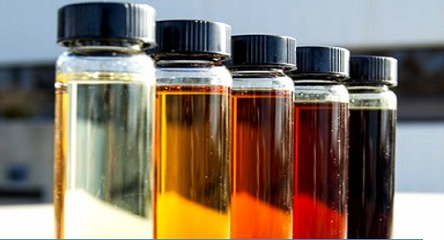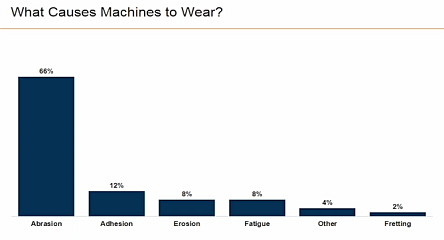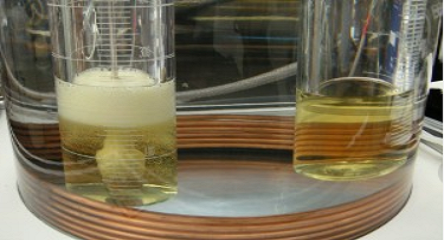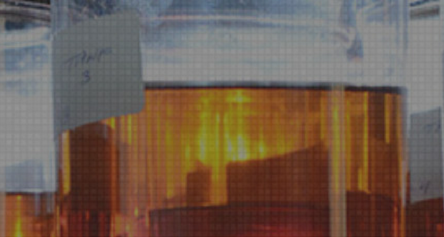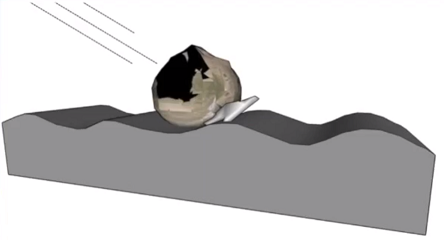
Point of care oil analysis testing is now established and accelerating as companies find reliability improvements and cost savings.
In a recent reliability survey, between 60 to 70% of industrial facilities employ oil analysis as an important component of their reliability programs. Oil analysis gives a snapshot of machinery health, preventing unnecessary oil changes and predicting equipment failures before they happen. Most organizations draw oil analysis samples and ship them off-site to be analyzed in a laboratory. The results are sent back anywhere from days to weeks depending on location and industry. Point of care oil analysis (today’s on-site oil analysis) has grown rapidly in the last three years as leading companies in power generation, mining, food production and industrial manufacturing invest in tools and software solutions to insource at each production site. Benefits experienced by these early leaders indicates that this trend will accelerate more now, despite current challenges. Here are 5 reasons why organizations across the world are investing in point of care solutions:
Point of care solutions provide the maintenance team with accurate answers about
equipment when needed. This is especially important when teams are working in
24/7 operations. Waiting for data to come back in days or weeks to make important
decisions is not viable. Having oil analysis data within minutes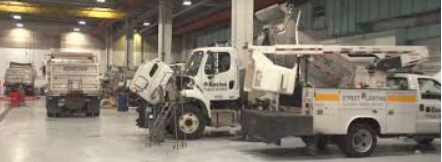 of drawing the sample enables maintenance decisions to be completed on the same workorder, thus increasing efficiency. This is exactly why Scott Alther, Fleet Maintenance Manager, City of Boston invested in an MicroLab oil
of drawing the sample enables maintenance decisions to be completed on the same workorder, thus increasing efficiency. This is exactly why Scott Alther, Fleet Maintenance Manager, City of Boston invested in an MicroLab oil
analysis system for support of the work bays for its 1100 piece fleet. “Mechanics have results within minutes of taking oil, and tasks can be completed before it leaves the garage — usually in a few hours.”
Organizations are now dealing with round the clock production, staggered shifts, and very tight maintenance windows. Rapid testing and diagnostics are critical to managing rapidly changing production needs and minimizing disruption.

Facilities who have deployed point of care solutions have justified their investment payback in as little as six months. Changing to a condition-based oil change has immediate effects. Reducing or eliminating outside laboratory testing is significant, including the logistics costs. Monitoring incoming oil deliveries for cleanliness and ensuring they have the correct oil reduces risk to equipment. Proactive and
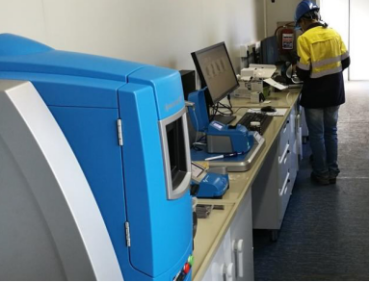 root cause analysis detects early machine failure and reduces spare parts and overhaul labor. Resolute Mining installed point of care solutions at its remote mining sites in Mali and Madagascar and was quickly able to operate them with local technicians. Brett Fairweather, the Maintenance Superintendent noted, “Having worked in the mining maintenance industry for over 21 years with all the major OEMs and suppliers to the mining industry, my key recommendation to colleagues in the industry is that these solutions achieve superior equipment reliability and the lowest possible Total Cost of Ownership.” “Shipping costs have increased dramatically thisyear. We have seen a sevenfold (7X) increase in cost/kg to transport samples in many regions due to transport system challenges,” notes Sean Cooley, Atomic Oil Laboratories, Kylami, South Africa. “On-site oil analysis solutions make economic sense more than ever before. It pays for itself just on avoiding downtime and resulting cost for parts and lubricants. The just-in-time spare parts business is not cost effective right now.” As uncertainty in transport, parts production and capital budgets are frozen, organizations will look to lower costs while maintaining production availability. Point of care oil analysis makes sense now.
root cause analysis detects early machine failure and reduces spare parts and overhaul labor. Resolute Mining installed point of care solutions at its remote mining sites in Mali and Madagascar and was quickly able to operate them with local technicians. Brett Fairweather, the Maintenance Superintendent noted, “Having worked in the mining maintenance industry for over 21 years with all the major OEMs and suppliers to the mining industry, my key recommendation to colleagues in the industry is that these solutions achieve superior equipment reliability and the lowest possible Total Cost of Ownership.” “Shipping costs have increased dramatically thisyear. We have seen a sevenfold (7X) increase in cost/kg to transport samples in many regions due to transport system challenges,” notes Sean Cooley, Atomic Oil Laboratories, Kylami, South Africa. “On-site oil analysis solutions make economic sense more than ever before. It pays for itself just on avoiding downtime and resulting cost for parts and lubricants. The just-in-time spare parts business is not cost effective right now.” As uncertainty in transport, parts production and capital budgets are frozen, organizations will look to lower costs while maintaining production availability. Point of care oil analysis makes sense now.
Major advances in electronics, software and sampling approaches have transformed the measurement tools for condition-based oil analysis in the last five years. Easy-to-operate instruments, with little to no chemicals, means data can be generated by the maintenance team in the course of their daily tasks. The new generation of systems have, at their core, software that integrates the data from all the instruments and
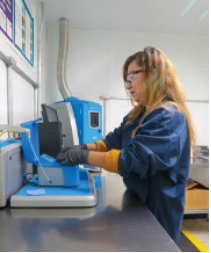 combines them into a simple report. Automated recommendations are available from startup, and they may be changed or added as the team learns more. The ability to share the report across the organization immediately, via cloud or hosted enterprise software, links all reliability stakeholders. “The TruVu 360™ platform is far more intuitive, softening the learning curve. It’s easily customizable, so making it fit into your program doesn’t require hours on the phone.” says Nate Hivner, Carpenter Technologies, Reading PA, USA. A Senior Reliability Engineer at a large food processing plant in the US Midwest justified the investment based on its 600 critical assets. They began testing 1400 “balance of plant” assets. “These are smaller pieces of equipment we can’t filter (sump too small, access problems, etc.) so when we change the oil out we grab a sample and check for any iron that would signal significant wear. We like tools that are easy to operate, quick, with one test sample that signals equipment degradation — all our operators can use them.” Systems that are easy, reliable and repeatable enable even the most occasional user to provide meaningful data to make decisions. Organizations will deal with human resource disruptions — absences, force reductions and loss of contract labor in the near term. Point of care analysis can be performed by anyone.
combines them into a simple report. Automated recommendations are available from startup, and they may be changed or added as the team learns more. The ability to share the report across the organization immediately, via cloud or hosted enterprise software, links all reliability stakeholders. “The TruVu 360™ platform is far more intuitive, softening the learning curve. It’s easily customizable, so making it fit into your program doesn’t require hours on the phone.” says Nate Hivner, Carpenter Technologies, Reading PA, USA. A Senior Reliability Engineer at a large food processing plant in the US Midwest justified the investment based on its 600 critical assets. They began testing 1400 “balance of plant” assets. “These are smaller pieces of equipment we can’t filter (sump too small, access problems, etc.) so when we change the oil out we grab a sample and check for any iron that would signal significant wear. We like tools that are easy to operate, quick, with one test sample that signals equipment degradation — all our operators can use them.” Systems that are easy, reliable and repeatable enable even the most occasional user to provide meaningful data to make decisions. Organizations will deal with human resource disruptions — absences, force reductions and loss of contract labor in the near term. Point of care analysis can be performed by anyone.
Point of care oil analysis improves data integrity in a number of ways. First, freshly sampled oil provides better insight to the equipment. Retests to corroborate or debunk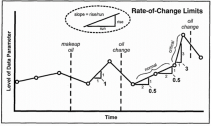 a possible problem is much easier than working with an off-site supplier. Pertinent information about samples can be verified immediately. Engineers and reliability technicians have access to OEM guides and manuals, and they know the operation intimately. They are in the best position to establish alarms. The Reliability Team at Kennedy Space Center Test Operations and Support (TOSC) “oil pharmacy” noted the data provided greater confidence among system engineers that proper lubricants are in use and gave more precise and accurate monitoring of machine health. “The oil pharmacy
a possible problem is much easier than working with an off-site supplier. Pertinent information about samples can be verified immediately. Engineers and reliability technicians have access to OEM guides and manuals, and they know the operation intimately. They are in the best position to establish alarms. The Reliability Team at Kennedy Space Center Test Operations and Support (TOSC) “oil pharmacy” noted the data provided greater confidence among system engineers that proper lubricants are in use and gave more precise and accurate monitoring of machine health. “The oil pharmacy
has made it possible for analytical findings to be used in data-driven, cost-cutting decisions on the planning and scheduling of maintenance
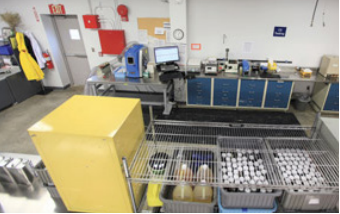 work orders. All of these achievements indicate that management’s anticipation of streamlining machine efficiency, control and reliability was well-placed,” said Sean Hollis, Reliability Engineer. Simmons Feed Missouri (SFI) established a high-performance program. It implemented cautionary and critical alarms on its machines, intelligently and with input from the engineers and operators with the data. SFI now plans 85 percent of its work orders because employees can identify necessary replacement parts before the machines fail.
work orders. All of these achievements indicate that management’s anticipation of streamlining machine efficiency, control and reliability was well-placed,” said Sean Hollis, Reliability Engineer. Simmons Feed Missouri (SFI) established a high-performance program. It implemented cautionary and critical alarms on its machines, intelligently and with input from the engineers and operators with the data. SFI now plans 85 percent of its work orders because employees can identify necessary replacement parts before the machines fail.
Shared software platforms, with the same point of care solutions throughout multiple sites, increase efficiency within an enterprise. Early adopters of point of care oil analysis have realized that successful oil analysis programs are easier with common platforms. Equipment reliability can be viewed at the enterprise level, affording organizations considerable bargaining power when negotiating with an OEM for
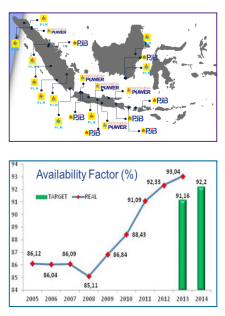 future purchases or current warranty costs. Problem-solving knowledge from equipment maintainers also can be shared across the enterprise, so people at each site can easily tap into others’ experiences and expertise. Since 2014, PJB/Indonesia Power has taken an enterprise-wide approach by installing MiniLab solutions at their remote power stations across the country. The Equipment Availability Factor, a key metric for the country-wide utility, rose steadily as the power plants became more reliable and began supporting each other. Similarly, a British Columbia-based paper mill has implemented its point of care oil analysis program across multiple sites. If technicians are not available in one facility, freshly drawn samples can be analyzed at other mill sites. All sites use the same equipment and share a common platform, providing seamless backup to avoid equipment disruptions. Organizations will benefit from enterprise-wide point of care solutions to support a company’s reliability efforts as part of their disruption contingency plans. Summary Oil analysis at various plant locations was once reserved for those who could duplicate off-site laboratories. This model has changed in the last few years. The process can be brought on-site with little ancillary equipment or training. Miniature, rugged, portable instruments make this process simple and accurate without the need for solvents and dangerous chemicals. Point of care oil analysis is a proven and viable path forward for organizations looking to reduce risk.
future purchases or current warranty costs. Problem-solving knowledge from equipment maintainers also can be shared across the enterprise, so people at each site can easily tap into others’ experiences and expertise. Since 2014, PJB/Indonesia Power has taken an enterprise-wide approach by installing MiniLab solutions at their remote power stations across the country. The Equipment Availability Factor, a key metric for the country-wide utility, rose steadily as the power plants became more reliable and began supporting each other. Similarly, a British Columbia-based paper mill has implemented its point of care oil analysis program across multiple sites. If technicians are not available in one facility, freshly drawn samples can be analyzed at other mill sites. All sites use the same equipment and share a common platform, providing seamless backup to avoid equipment disruptions. Organizations will benefit from enterprise-wide point of care solutions to support a company’s reliability efforts as part of their disruption contingency plans. Summary Oil analysis at various plant locations was once reserved for those who could duplicate off-site laboratories. This model has changed in the last few years. The process can be brought on-site with little ancillary equipment or training. Miniature, rugged, portable instruments make this process simple and accurate without the need for solvents and dangerous chemicals. Point of care oil analysis is a proven and viable path forward for organizations looking to reduce risk.
Summary
Oil analysis at various plant locations was once reserved for those who could duplicate off-site laboratories. This model has changed in the last few years. The process can be brought on-site with little ancillary equipment or training. Miniature, rugged, portable instruments make this process simple and accurate without the need for solvents and dangerous chemicals. Point of care oil analysis is a proven and viable path forward for organizations looking to reduce risk.
REFERENCES
1. “Plants get comfortable with predictive tools while gearing up for data management challenges” Thomas Wilk, Plant Services April 2020
2. City of Boston MicroLab Case Study https://static1.squarespace.com/static/584598d4d1758ec839a47bab/t/5ba54c56b208fcd63fbca002/1537559642769/
C3+Sustainable+Garage+Spectro+Scientific+SFT+2018.pdf
3. A.E Catteret, Major Reliability and Lubricant Consumption Savings at Tutuka Power Station https://www.machinerylubrication.com/Read/181/lubricant-consumption-savings
4. Atomic Oil, Resolute Mining letter of reference
5. Cailendra Gautama PT Tiara Vibrasindo Pratama Presentation Spectro Scientific Sales Meeting 2018
6. https://www.machinerylubrication.com/Read/31385/jacobs-oil-analysis
7. https://www.machinerylubrication.com/Read/31304/simmons-lubrication-program
8. Hivner, N., Williams, L. “Integrating Industry 4.0 Techniques into an On-Site Oil Analysis Program,” Online Webinar, Chelmsford, MA March 2019.



 of drawing the sample enables maintenance decisions to be completed on the same workorder, thus increasing efficiency. This is exactly why Scott Alther, Fleet Maintenance Manager, City of Boston invested in an MicroLab oil
of drawing the sample enables maintenance decisions to be completed on the same workorder, thus increasing efficiency. This is exactly why Scott Alther, Fleet Maintenance Manager, City of Boston invested in an MicroLab oil
 root cause analysis detects early machine failure and reduces spare parts and overhaul labor. Resolute Mining installed point of care solutions at its remote mining sites in Mali and Madagascar and was quickly able to operate them with local technicians. Brett Fairweather, the Maintenance Superintendent noted, “Having worked in the mining maintenance industry for over 21 years with all the major OEMs and suppliers to the mining industry, my key recommendation to colleagues in the industry is that these solutions achieve superior equipment reliability and the lowest possible Total Cost of Ownership.” “Shipping costs have increased dramatically thisyear. We have seen a sevenfold (7X) increase in cost/kg to transport samples in many regions due to transport system challenges,” notes Sean Cooley, Atomic Oil Laboratories, Kylami, South Africa. “On-site oil analysis solutions make economic sense more than ever before. It pays for itself just on avoiding downtime and resulting cost for parts and lubricants. The just-in-time spare parts business is not cost effective right now.” As uncertainty in transport, parts production and capital budgets are frozen, organizations will look to lower costs while maintaining production availability. Point of care oil analysis makes sense now.
root cause analysis detects early machine failure and reduces spare parts and overhaul labor. Resolute Mining installed point of care solutions at its remote mining sites in Mali and Madagascar and was quickly able to operate them with local technicians. Brett Fairweather, the Maintenance Superintendent noted, “Having worked in the mining maintenance industry for over 21 years with all the major OEMs and suppliers to the mining industry, my key recommendation to colleagues in the industry is that these solutions achieve superior equipment reliability and the lowest possible Total Cost of Ownership.” “Shipping costs have increased dramatically thisyear. We have seen a sevenfold (7X) increase in cost/kg to transport samples in many regions due to transport system challenges,” notes Sean Cooley, Atomic Oil Laboratories, Kylami, South Africa. “On-site oil analysis solutions make economic sense more than ever before. It pays for itself just on avoiding downtime and resulting cost for parts and lubricants. The just-in-time spare parts business is not cost effective right now.” As uncertainty in transport, parts production and capital budgets are frozen, organizations will look to lower costs while maintaining production availability. Point of care oil analysis makes sense now.
 combines them into a simple report. Automated recommendations are available from startup, and they may be changed or added as the team learns more. The ability to share the report across the organization immediately, via cloud or hosted enterprise software, links all reliability stakeholders. “The TruVu 360™ platform is far more intuitive, softening the learning curve. It’s easily customizable, so making it fit into your program doesn’t require hours on the phone.” says Nate Hivner, Carpenter Technologies, Reading PA, USA. A Senior Reliability Engineer at a large food processing plant in the US Midwest justified the investment based on its 600 critical assets. They began testing 1400 “balance of plant” assets. “These are smaller pieces of equipment we can’t filter (sump too small, access problems, etc.) so when we change the oil out we grab a sample and check for any iron that would signal significant wear. We like tools that are easy to operate, quick, with one test sample that signals equipment degradation — all our operators can use them.” Systems that are easy, reliable and repeatable enable even the most occasional user to provide meaningful data to make decisions. Organizations will deal with human resource disruptions — absences, force reductions and loss of contract labor in the near term. Point of care analysis can be performed by anyone.
combines them into a simple report. Automated recommendations are available from startup, and they may be changed or added as the team learns more. The ability to share the report across the organization immediately, via cloud or hosted enterprise software, links all reliability stakeholders. “The TruVu 360™ platform is far more intuitive, softening the learning curve. It’s easily customizable, so making it fit into your program doesn’t require hours on the phone.” says Nate Hivner, Carpenter Technologies, Reading PA, USA. A Senior Reliability Engineer at a large food processing plant in the US Midwest justified the investment based on its 600 critical assets. They began testing 1400 “balance of plant” assets. “These are smaller pieces of equipment we can’t filter (sump too small, access problems, etc.) so when we change the oil out we grab a sample and check for any iron that would signal significant wear. We like tools that are easy to operate, quick, with one test sample that signals equipment degradation — all our operators can use them.” Systems that are easy, reliable and repeatable enable even the most occasional user to provide meaningful data to make decisions. Organizations will deal with human resource disruptions — absences, force reductions and loss of contract labor in the near term. Point of care analysis can be performed by anyone.
 a possible problem is much easier than working with an off-site supplier. Pertinent information about samples can be verified immediately. Engineers and reliability technicians have access to OEM guides and manuals, and they know the operation intimately. They are in the best position to establish alarms. The Reliability Team at Kennedy Space Center Test Operations and Support (TOSC) “oil pharmacy” noted the data provided greater confidence among system engineers that proper lubricants are in use and gave more precise and accurate monitoring of machine health. “The oil pharmacy
a possible problem is much easier than working with an off-site supplier. Pertinent information about samples can be verified immediately. Engineers and reliability technicians have access to OEM guides and manuals, and they know the operation intimately. They are in the best position to establish alarms. The Reliability Team at Kennedy Space Center Test Operations and Support (TOSC) “oil pharmacy” noted the data provided greater confidence among system engineers that proper lubricants are in use and gave more precise and accurate monitoring of machine health. “The oil pharmacy work orders. All of these achievements indicate that management’s anticipation of streamlining machine efficiency, control and reliability was well-placed,” said Sean Hollis, Reliability Engineer. Simmons Feed Missouri (SFI) established a high-performance program. It implemented cautionary and critical alarms on its machines, intelligently and with input from the engineers and operators with the data. SFI now plans 85 percent of its work orders because employees can identify necessary replacement parts before the machines fail.
work orders. All of these achievements indicate that management’s anticipation of streamlining machine efficiency, control and reliability was well-placed,” said Sean Hollis, Reliability Engineer. Simmons Feed Missouri (SFI) established a high-performance program. It implemented cautionary and critical alarms on its machines, intelligently and with input from the engineers and operators with the data. SFI now plans 85 percent of its work orders because employees can identify necessary replacement parts before the machines fail.
 future purchases or current warranty costs. Problem-solving knowledge from equipment maintainers also can be shared across the enterprise, so people at each site can easily tap into others’ experiences and expertise. Since 2014, PJB/Indonesia Power has taken an enterprise-wide approach by installing MiniLab solutions at their remote power stations across the country. The Equipment Availability Factor, a key metric for the country-wide utility, rose steadily as the power plants became more reliable and began supporting each other. Similarly, a British Columbia-based paper mill has implemented its point of care oil analysis program across multiple sites. If technicians are not available in one facility, freshly drawn samples can be analyzed at other mill sites. All sites use the same equipment and share a common platform, providing seamless backup to avoid equipment disruptions. Organizations will benefit from enterprise-wide point of care solutions to support a company’s reliability efforts as part of their disruption contingency plans. Summary Oil analysis at various plant locations was once reserved for those who could duplicate off-site laboratories. This model has changed in the last few years. The process can be brought on-site with little ancillary equipment or training. Miniature, rugged, portable instruments make this process simple and accurate without the need for solvents and dangerous chemicals. Point of care oil analysis is a proven and viable path forward for organizations looking to reduce risk.
future purchases or current warranty costs. Problem-solving knowledge from equipment maintainers also can be shared across the enterprise, so people at each site can easily tap into others’ experiences and expertise. Since 2014, PJB/Indonesia Power has taken an enterprise-wide approach by installing MiniLab solutions at their remote power stations across the country. The Equipment Availability Factor, a key metric for the country-wide utility, rose steadily as the power plants became more reliable and began supporting each other. Similarly, a British Columbia-based paper mill has implemented its point of care oil analysis program across multiple sites. If technicians are not available in one facility, freshly drawn samples can be analyzed at other mill sites. All sites use the same equipment and share a common platform, providing seamless backup to avoid equipment disruptions. Organizations will benefit from enterprise-wide point of care solutions to support a company’s reliability efforts as part of their disruption contingency plans. Summary Oil analysis at various plant locations was once reserved for those who could duplicate off-site laboratories. This model has changed in the last few years. The process can be brought on-site with little ancillary equipment or training. Miniature, rugged, portable instruments make this process simple and accurate without the need for solvents and dangerous chemicals. Point of care oil analysis is a proven and viable path forward for organizations looking to reduce risk.
